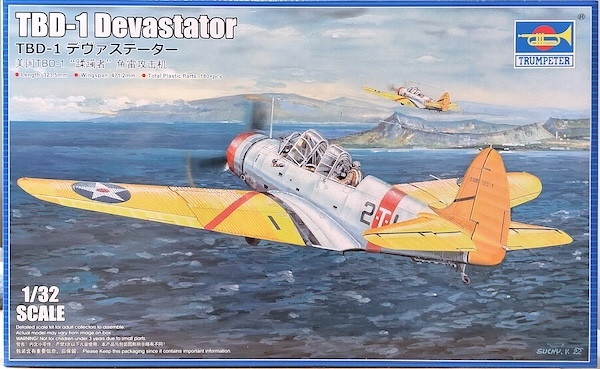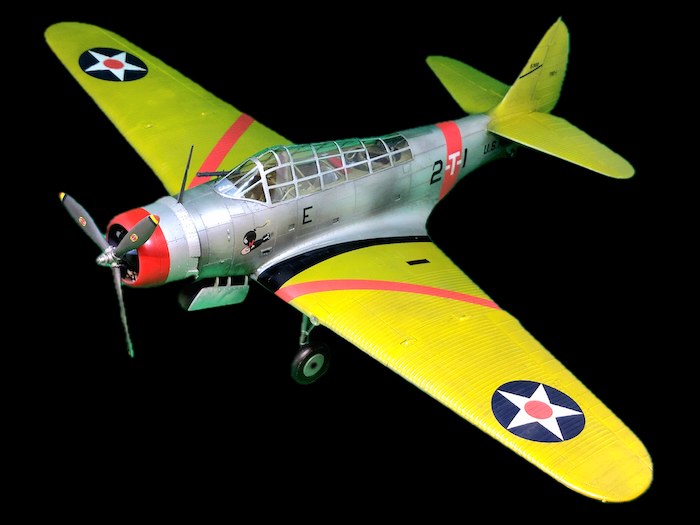
Featured review by Rob Ruscoe
Just before we get started, here’s a look at how the project turned out…

During the 1940 German invasion of France and Belgium, the Royal Air Force employed a light bomber to support the British Expeditionary Force. This single engine, three seater monoplane was already obsolete by this time and its mediocre performance meant it was easy prey for the German fighters and AAA. In a matter of four days, these aircraft were decimated – 40 out of 63 being lost in a single day. After this the aircraft was rapidly taken out of operational service. This machine was of course the Fairey Battle.
Two full years later, the US Navy was still operating the TBD-1 Devastator as its main light conventional and torpedo bomber. This three seater, single engine monoplane, was an aircraft with a performance even worse than the ill-fated Battle and indeed was to meet a similar fate at the hands of modern fighters.
Entering service in 1937, the aircraft was considered the most modern in the navy at that time. Powered by a Pratt & Whitney R-1830 Twin Wasp engine of 850hp, the aircraft had a maximum speed of 206 mph and a cruise speed of only 128 mph. By 1940 the navy knew that something much better was needed. This was to be the Grumman Avenger, then still on the drawing board. By the time of Pearl Harbour, the Devastator was still soldiering on and would have to bear the brunt of the carrier battles to come, along with its stablemate, the Dauntless.
As a torpedo bomber, the aircraft carried a single Mk13 torpedo. This weapon was not recognised at this time by the upper echelons of the navy as being almost useless. Not only would it refuse to run straight or at a selected depth, 30% of those launched at Coral Sea and Midway also refused to explode when they hit anything. Even when modified by the Bureau of Ordnance, 1943 testing revealed that out of 105 torpedoes dropped at speeds in excess of 150 kts, 20 percent ran cold, 20 percent sank, 20 percent didn’t run where aimed, 18 percent gave unsatisfactory depth performance, 2 percent ran on the surface and only 31 percent were satisfactory. The total of over 100 percent reflected the fact that many weapons had more than one defect. It wasn’t until late 1944 before most of the problems had been eradicated.
At the Battle of the Coral Sea, the TBDs did score two hits on the Japanese light carrier Shoho but suffered a high loss rate.
The turning point of the Pacific war was to come at the Battle of Midway. It was this action that was to prove the shortcomings of the TBD and its torpedo. Of the 41 Devastators which found the Japanese carriers, only six survived to return to their own carriers. No torpedo hits were scored. The TBDs did inadvertently contribute greatly to the successful outcome of the action by drawing the Japanese fighters down to sea level, using up their fuel and ammunition and causing the ships to take evasive action. All this meant that when the late-arriving Dauntless dive bombers appeared an hour later, they found the skies clear of fighters and proceeded to avenge the TBD crews by sending three of the four fleet carriers to the bottom (the fourth was sunk later that day).
After this, the Devastator was rapidly replaced in service by the Avenger. Unfortunately no TBDs survive today.